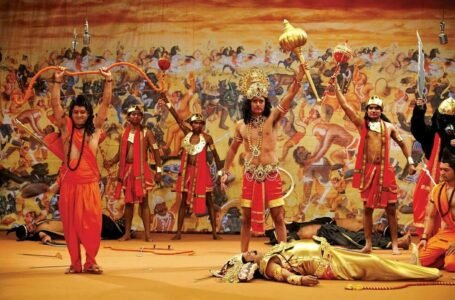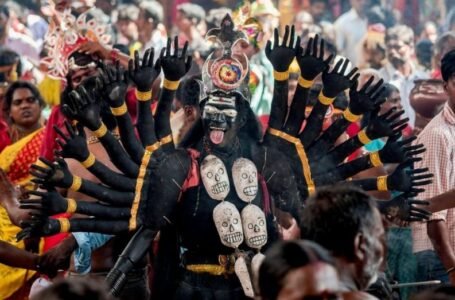Malkauns: A Mystic Journey Through the Night’s Embrace

-Khirabdhi Tanaya Gour
The melodic sound travels between night shades while the moonlit haze surrounds it. In the traditional North Indian classical music, Raag Malkauns is a legendary composition with a magical history. Malkauns is characterized by its profound and reflective atmosphere and a sense of grandeur reminiscent of the tranquility of midnight, and is frequently regarded as a route for one’s soul to engage in self-reflection. From the courtyards of temples to contemporary concert venues, it captivates audiences with its elegant simplicity. This detailed blog on the Raag Malkauns includes its historical development, structural elements, emotional components, and performance and interpretation strategies.
Origins and Historical Context
The roots of Raag Malkauns are hidden in antiquity. Malkauns receives its name from the Sanskrit words mala, meaning “garland,” while kauns refers to “a particular melody,” which implies a “garland of musical notes.”
Malkauns have been featured in two influential musical treatises of Indian classical music: Sangita Ratnakara from the 13th century and Raga Prakash from the 17th century, when musicians defined its five-note structure. Malkauns reserved its place in serious meditative performances as it commonly appeared at the core of extended all-night concerts in classical Indian music tradition.
The Thaat and Note Structure
Malkauns exists within Bhairavi Thaat, which belongs to the North Indian music system. The melodies consist of five distinctive notes known as svaras, which are used in the composition.
- Sa (Shadja) – the tonic
- Komal Ga (flat Ga) – the minor third
- Shuddh Ma (natural Ma) – the perfect fourth
- Komal Dha (flat Dha) – the minor sixth
- Komal Ni (flat Ni) – the minor seventh
There is no usage of Re (second) or Pa (fifth), which creates an introspective musical character that remains ambiguous.
Arohana (ascending): Sa – Komal Ga – Shuddh Ma – Komal Dha – Komal Ni – Sa’
Avarohana (descending) Sa – Komal Ni – Komal Dha – Shuddh Ma – Komal Ga – Sa
The paired flat Ga together with flat Dha produce a characteristic tension that generates an emotional yearning throughout the piece.
Vaadi, Samvadi, and the Key Phrases
Malkauns uses Shadja (Sa) as its vadi’s most important note, while Shuddh Ma functions as the samvadi’s second most significant note. Enhancing the two core notes in improvisation develops the raga’s meditative quality.
The essential melodic phrases called pakad are used to recognize this musical composition:
- Sa – Ga, Ma – Ga – Sa
- Sa – Ni, Dha – Ma, Ga – Sa
- Ma – Dha – Ga
Woven into elaborate, flowing improvisations, the themes draw listeners deeply into the raga’s nocturnal dreamscape.
Emotional Essence (Rasa) and Time of Day
Malkauns carries an essence of karuna rasa (the pathos or compassionate mood). It presents a delicate emotional experience that combines gentle sadness with peaceful tranquility without the exuberance found in other ragas. Its contemplative nature makes this composition popular at midnight and early-morning hours, so musicians perform it between midnight and three in the morning. Modern-day musicians start the second part of their artistic performance with Malkauns to guide listeners from dancer melodies (Jhaptal or Teen Taal compositions) toward deeper musical experiences.
Compositional Forms and Bandishes
Malkauns mainly exists as an improvised musical form (alap jod jhala) yet maintains several fixed compositions (Bandishes) through Teental and Ektaal cycles.
- Vilambit Bandish (slow): Often set in Teental (16 beats), it unfolds gradually, allowing each note to resonate.
- Drut Bandish (fast): In Ektaal (12 beats), this composition showcases rhythmic interplay, weaving pentatonic phrases with intricate bols.
The illustrative Bandish “Sagun Dhundhla Jhoom Re Girdhar” provides performers and the listeners with a complete immersion through its extended fluid melodic expressions.
Approaches to Improvisation
Alap
The introductory part is where the artist delves into the nuances of each note’s hue and microtonal variations (shruti). The alap section of Malkauns extends smoothly without haste because the musician stretches musical phrases to encompass empty intervals between notes.
Jod and Jhala
The rhythm intensifies as the raga stays in a reflective state during the jod segment. At the beginning of jhala, the busy rhythmic complexity emerges as the performer alternates fast between Dha and Ni while creating a gradual climb of tension, which leads performers into the tabla section.
Gat in Teental/Ektaal
Music accompanying the gat, artists play syncopated rhythms along with cross-rhythms and rhythmic shifts while sustaining the original core elements of the raga.
Iconic Exponents and Recordings
Throughout Malkauns, the exquisite, elongated Malkauns alap performance by Ustad Amir Khan establishes itself as the definitive example of emotional depth. All India Radio broadcasts viewers can experience Pandit Bhimsen Joshi using his powerful voice to present the full magnificence of the raga. Through his Symposium Records albums, Dr. L. Subramaniam combines the Indian raga Malkauns with Western musical harmonies, thus stretching its original expressive boundaries. Modernity-oriented listeners should start their journey with the recordings of Amir Khan performing Malkauns (Rivers of Melancholy) and Bhimsen Joshi performing Late Night Raga.
Malkauns in Contemporary Context
Malkauns transcends traditional classical music performance roles to appear throughout film compositions, along with fusion albums and therapeutic audios. Music therapists found that Malkauns provides deep relaxation that delivers essential benefits during meditation sessions and stress relief, and guided relaxation practices. Cinema directors deploy muted tones for two purposes in storytelling: first, to enhance quiet reflective moments, and second to reach emotional peaks.
Through their collaborative works, Indian percussionist Zakir Hussain with guitarist John McLaughlin integrate Malkauns elements into musical forms, including jazz and electronica, thus demonstrating its global musical value.
Learning and Teaching Tips
- Practice slow rise and descent sequences while concentrating on the correct musical pitches of komal swaras.
- Memory-based training of important pakads allows you to establish these anchors for your improvisations.
- Hold back the temptation to hurry—allow each note to hang in the air and resonate.
- Playing back your recording provides insights about tone pitch variations, together with rhythmic patterns for improving your performance.
- Watching masters perform through recorded recordings and comprehending their techniques for harmonizing traditional music with individual emotional expressions.
Conclusion
Minimalistic music finds its peak expression through Raag Malkauns. Few basic notes in the Malkauns scale generate tremendous emotional effects ranging from pensive yearning to peaceful cerenity to otherworldly transcendence. The music of Malkauns leads all listeners toward the heart of sound space, where they can experience the dissolution of time alongside the spiritual singing of their soul expression.


